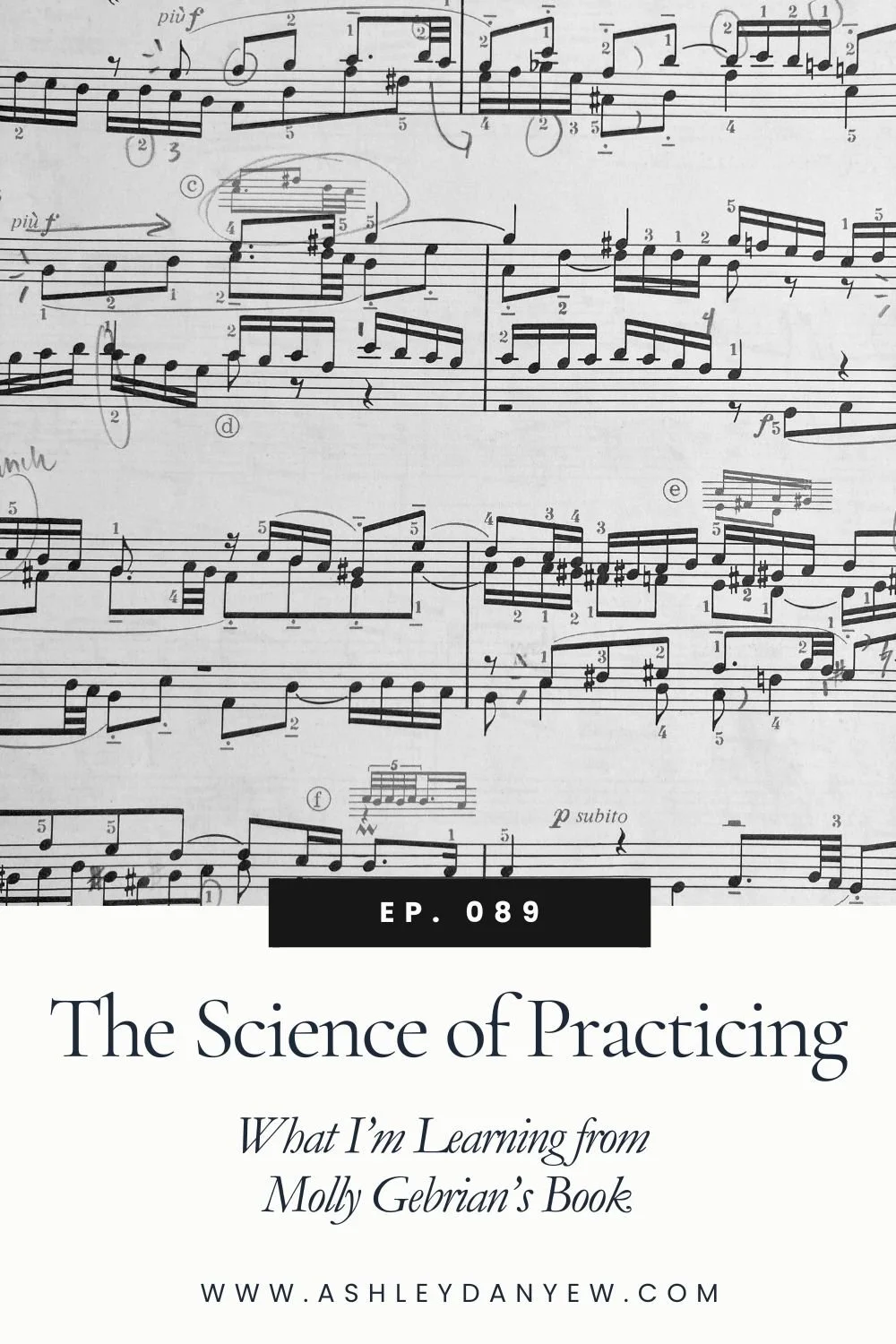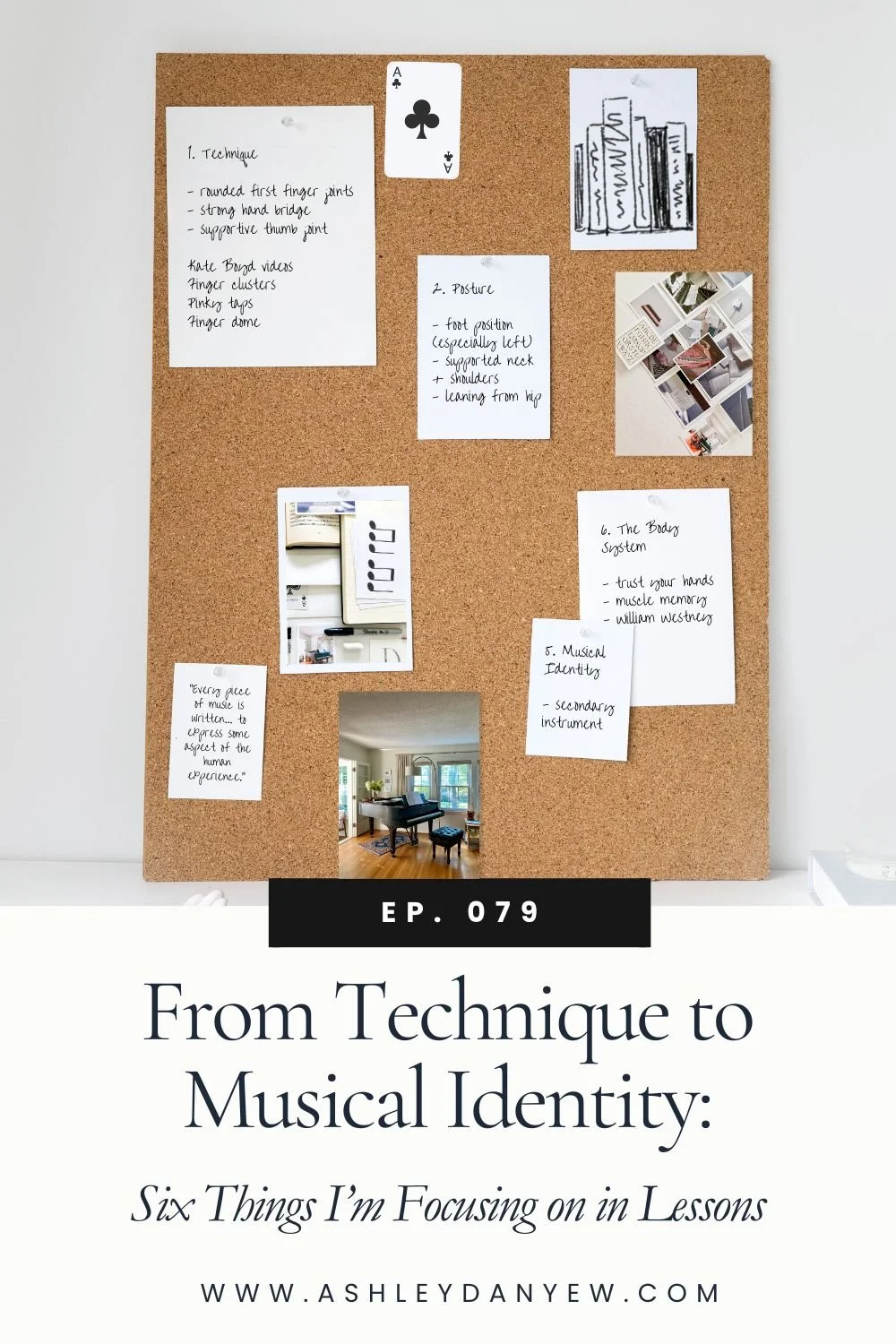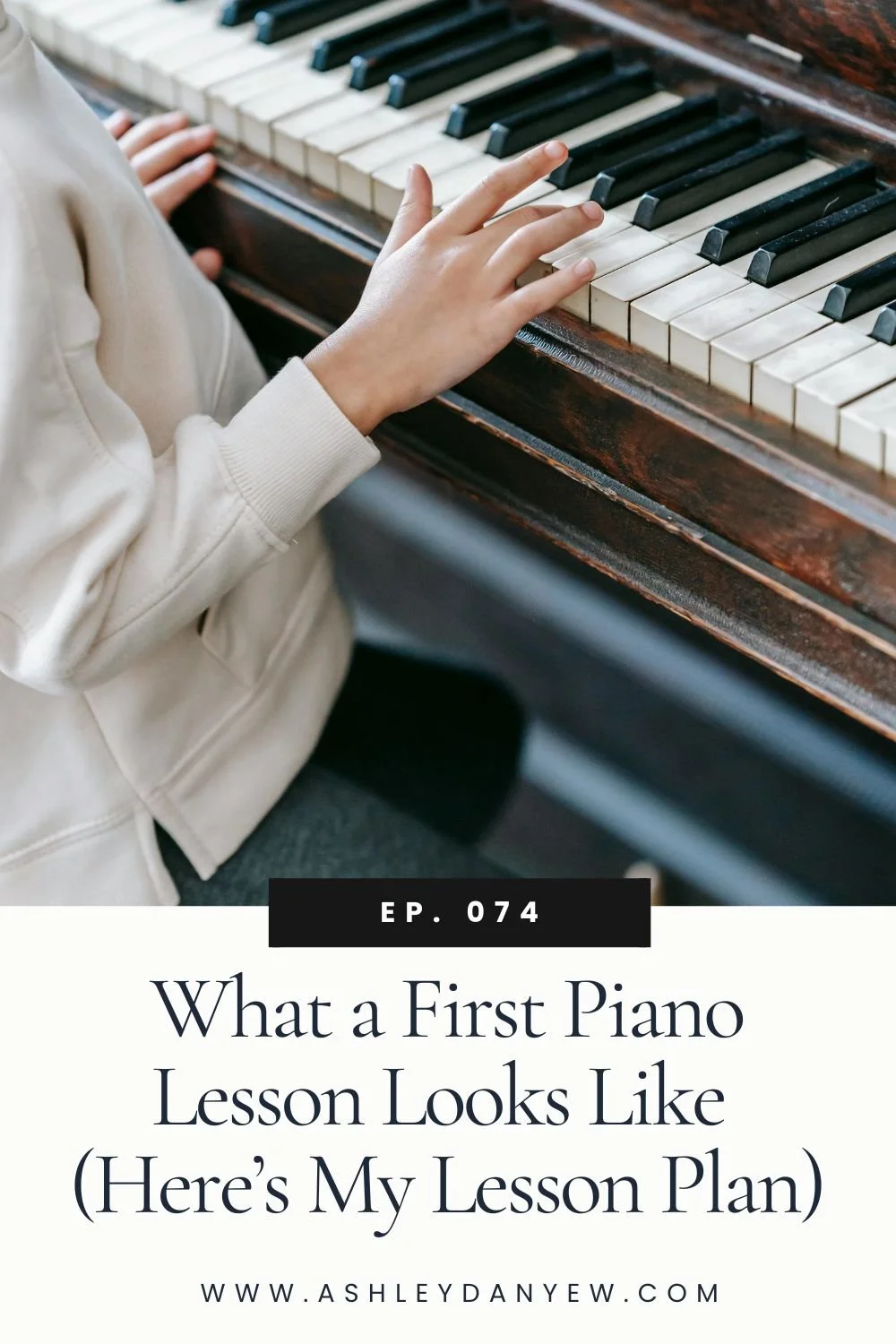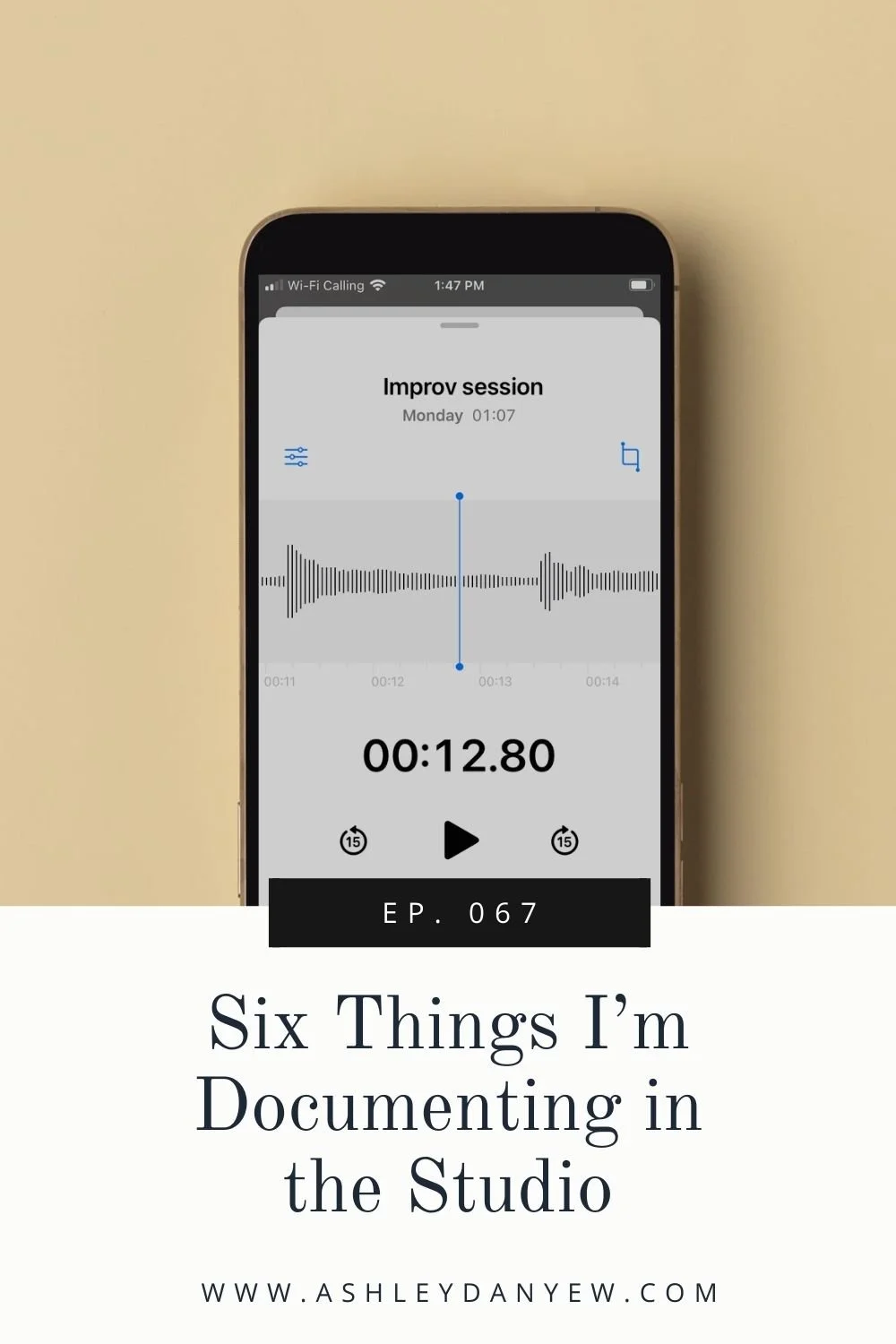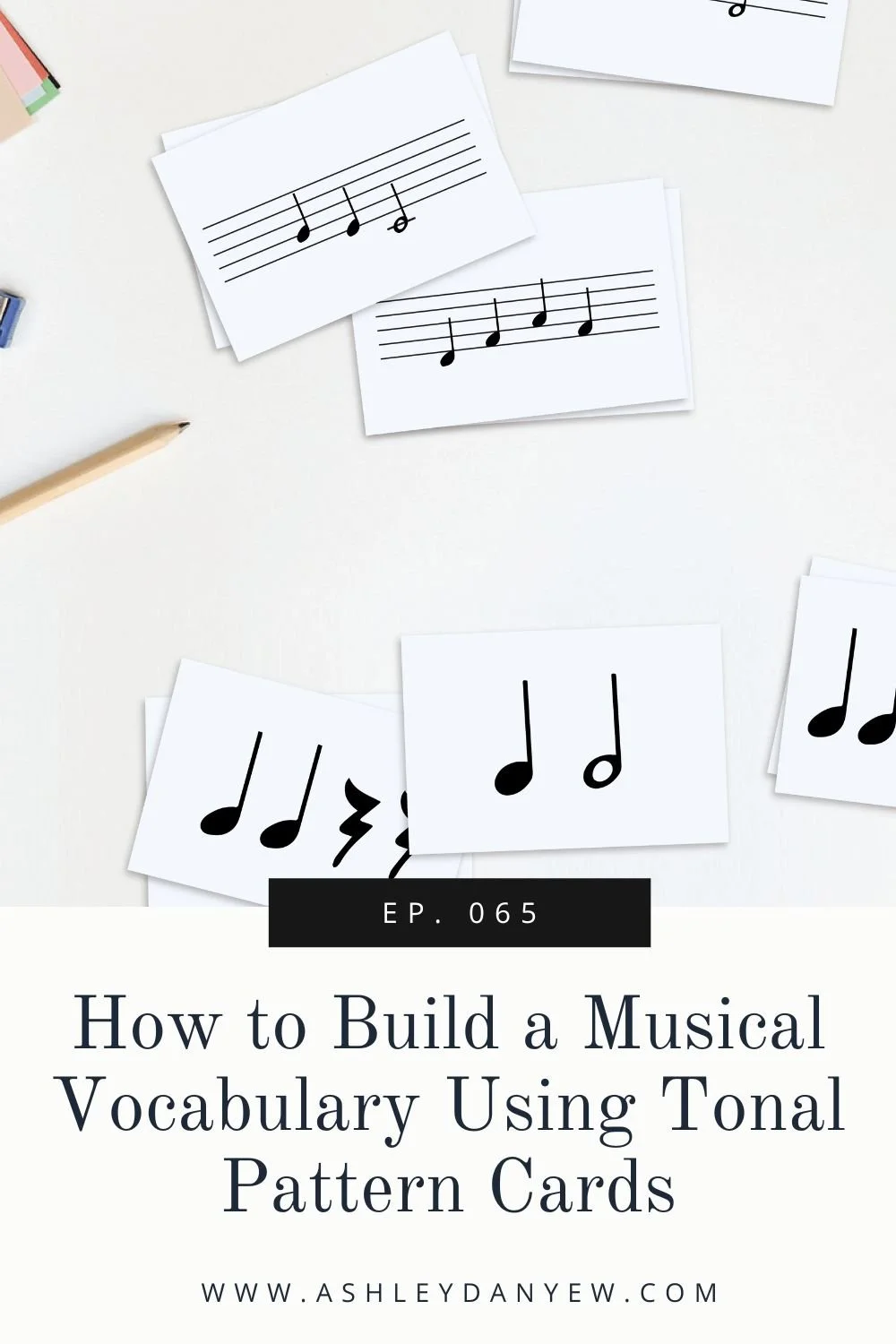Resources Mentioned
*Disclosure: I get commissions for purchases made through links in this post.
Do you improvise with your students?
If you have a classical background like I do, you may not consider yourself an improviser, but researchers and educators Christopher Azzara and Richard Grunow remind us that "we are [all] born improvisers, as evidenced by our behavior in early childhood." (source)
In their series, Developing Musicianship Through Improvisation, they define improvisation as "the spontaneous expression of meaningful musical ideas." It doesn't mean making things up in the moment; it means making meaningful choices, sequencing patterns, snippets, and ideas from a vast vocabulary of musical material, as I talked about in the last episode, Ep. 065.
In this episode, I'm sharing a simple improvisation prompt I use with my elementary students this time of year.
"Let's make a piece about snowflakes," I'll say one day during the lesson. "You can use all the white keys on the high side of the piano and I'll add an accompaniment down here on the low side."
That's usually all the introduction I provide. If a student hesitates, I might give a brief example, "Here's an idea of something you might do," I'll say, playing a 3- or 5-note pattern. "You can use repeated notes, stepping notes, or skipping notes. Do you have some ideas?"
Then, I'll give them a minute to experiment freely without feeling pressure to jump into a performance right away.
I like to record these improvisations on my phone (using the built-in audio recorder—nothing fancy) so I have a record of some of their earliest improvisations and so I have something to share with parents.
What's interesting to me listening back is what ideas they choose to incorporate. Some use scale-based patterns, marching up and down, some compose a short melody (with lyrics!) that they repeat and vary, some create something more atmospheric and impressionistic, and sometimes they even include snippets of pieces we're working on together.
A few quick notes before we begin:
You'll notice that my accompaniment is different each time. I'm improvising, too! I may start with the same chords and style, but I tried to match my accompaniment style to the student's improvisation, so you'll hear that development and interaction.
These students are in 1st or 2nd grade.
Please excuse the tuning of the pianos! I teach at a school in a few of the music classrooms and the pianos are not perfect.
I hope you enjoy this glimpse of improvising with elementary piano students.
How to Assess Musical Improvisation
Before we get to the musical examples in today's episode, let's talk about how to reflect on this experience as a teacher. How do you analyze or assess student improvisations?
The Developing Musicianship Through Improvisation books that I mentioned earlier include a one-page rating scale for assessing improvisation (for yourself or your students) and providing feedback for continued improvement.
A rating scale is an objective tool for evaluating and assessing music performance and achievement. It's kind of like a checklist. The improvisation rating scale has four primary dimensions: improvisation itself, rhythm, expression, and harmonic progression. These are the four things we're studying or analyzing in an improvisation.
Each dimension has five criteria, some additive, meaning you can circle all that apply, and some continuous, meaning the criteria progress in difficulty from 1 to 5 and you circle the one that applies.
If you're wondering what to listen for when improvising or how to assess the development of these skills in your students, here are the five criteria listed under the Improvisation dimension. These are additive, so you can pick and choose which ones apply:
Performs a variety of related ideas and reuses material in the context of the overall form
Demonstrates motivic development through tonal and rhythm sequences
Demonstrates effective use of silence
Demonstrates an understanding of tension and release through resolution of notes in the context of the harmonic progression
Embellishes notes and performs variations of themes
For beginning students, I'm not assessing harmonic progression and for a prompt like this that's free and relatively unstructured, I'm not really evaluating rhythm, though I do notice if they use rhythm patterns or interact with my rhythm.
I may also consider the Expressive dimension, which is also additive:
Demonstrates a sense of musical interaction
Demonstrates an understanding of dynamics
Demonstrates an understanding of musical style and characteristic tone quality
Demonstrates a sense of appropriate articulation
Demonstrates an understanding of appropriate phrasing
Here's the first student example I want to share with you today:
Example 1
I love the little musical conversation we had at the end there, the back and forth of these note clusters and the upward glissando to finish it, like sun sparkling on the snow.
Using the rating scale I mentioned before, I would say the student:
had a variety of ideas and reused material,
demonstrated effective use of silence,
played with a sense of musical interaction,
demonstrated an understanding of dynamics and musical style,
demonstrated a sense of appropriate articulation, and possibly,
played with musical phrasing, especially that last gesture.
Does this process make sense? This helps solidify the skills and awareness a student can demonstrate through improvisation.
Example 2
This student starts right away with a melody (with lyrics!) and I love that they didn't wait for me to begin.
When I listen back to this recording, I hear a strong reuse of material, but also motivic development of that idea. Did you catch the harmony they added in the middle? I also like how they modified the melody to stay on Do, repeated the Do-Re-Mi-Re-Do part, and stretched out the end of the melody with a very musical ritardando toward the end. And then, the last pattern Re-Mi-Re-Do is such a lovely final thought.
This student:
Performed a variety of related ideas and reused material,
Demonstrated motivic development,
Demonstrated an understanding of tension and release,
Performed variations of the theme,
Demonstrated a sense of musical interaction with my accompaniment,
Demonstrated an understanding of dynamics,
Demonstrated an understanding of musical style and played with a characteristic tone quality,
Demonstrated a sense of appropriate articulation, and
Demonstrated an understanding of appropriate phrasing.
They also played with cohesive rhythm and tempo throughout.
Example 3
You can hear how interested this student was with the very top of the piano and the idea of stepwise motion (sometimes involving black keys, which gave it a little twist!).
I hear this student:
Reusing material,
Demonstrating motivic development (the shift from whole steps to half steps),
Performing variations of themes (extending the range from a 3rd to a 5th)
Demonstrating an understanding of dynamics (quite soft in the middle!), and
Demonstrating a sense of appropriate articulation
Example 4
This student also uses stepwise motion. I love the whisper counting you can hear on the long notes. The rhythm here still feels like individual beats without a sense of an overall meter, but that's a start.
I hear this student:
Performing a variety of related ideas and reusing material,
Demonstrating a sense of musical interaction with my accompaniment,
Demonstrating an understanding of dynamics,
Demonstrating an understanding of musical style and playing with a characteristic tone,
Demonstrating a sense of appropriate articulation, and
Demonstrates an understanding of appropriate phrasing (especially with the final phrase).
Example 5
Another student exploring stepwise motion, though beyond the bounds of a 5-note scale. I love the shift to minor that we did together in the middle and the resolution on Sol at the end.
This improvisation featured:
A variety of related ideas and reuse of material,
Motivic development,
An understanding of tension and release
A sense of musical interaction,
An understanding of dynamics, musical style, and characteristic tone quality,
A sense of appropriate articulation, and
An understanding of appropriate phrasing.
Example 6
At the beginning of this clip, you can hear the student reflecting on possible ideas. They take their time at the beginning before joining me. Their initial ideas are text-based, but partway through, they begin exploring step-based patterns without text. I love the moment of tension and release (Ti-Do), the line of parallel 6ths we played together, and the gentle ending.
In this improvisation, I hear that the student can:
Perform a variety of related ideas
Demonstrate an understanding of tension and release
Demonstrate a sense of musical interaction
Demonstrate an understanding of dynamics
Demonstrate an understanding of musical style and characteristic tone quality
Demonstrate a sense of appropriate articulation
Demonstrate an understanding of appropriate phrasing
Conclusion
I hope this inspires and encourages you to build in moments for improvisation in your lessons, even with your youngest students. I'd love to hear what you learn and discover along the way.



